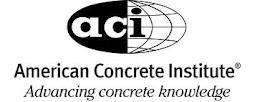A working group of the American Concrete Institute’s (ACI) Committee 131 on Building Information Modeling (BIM) is actively developing an Information Delivery Manual (IDM) for cast-in-place concrete. The IDM will capture in written form the interaction that occurs in the design and construction of concrete structures by identifying the parties involved in information exchange, what information is exchanged and when, based on a typical construction project timeline.
This IDM project is the outcome of ACI’s Strategic Development Council’s (SDC) initiative to focus the concrete industry on developing interoperability standards, and represents the first step in the development of data exchanges into the buildingSMART’s Industry Foundation Classes (IFC). IFC is an open and neutral data exchange format that covers construction information related to procurement, design, construction, and operations. IFCs will allow project information to be entered once, and then to be available and usable by every project team member across any software platform. The improved communication, coordination, and collaboration afforded by BIM implementation have already been shown to save time and money in projects.
A $60,000 grant from the Charles Pankow Foundation accounts for the majority of the $90,000 funding for this IDM project. Remaining funding is provided by Bechtel, Tekla, Bentley, Applied Systems Associates (aSa), RMC Research & Education Foundation, CRSI Education & Research Foundation, ASCC Foundation, Post Tensioning Institute, and two of the ACI Foundation’s Councils – the Concrete Research Council (CRC) and the Strategic Development Council (SDC).
A team from Georgia Technological University’s Digital Building Laboratory headed by Professor Chuck Eastman will assist the ACI IDM working group. The group’s first meeting took place during December of 2011 in Atlanta and its expected to complete the IDM by the end of 2012. The next meeting will be held in conjunction with the ACI Spring 2012 Convention in Dallas, Texas. BD+C
Related Stories
| Aug 11, 2010
Great Solutions: Healthcare
11. Operating Room-Integrated MRI will Help Neurosurgeons Get it Right the First Time A major limitation of traditional brain cancer surgery is the lack of scanning capability in the operating room. Neurosurgeons do their best to visually identify and remove the cancerous tissue, but only an MRI scan will confirm if the operation was a complete success or not.
| Aug 11, 2010
Great Solutions: Collaboration
9. HOK Takes Videoconferencing to A New Level with its Advanced Collaboration Rooms To help foster collaboration among its 2,212 employees while cutting travel time, expenses, and carbon emissions traveling between its 24 office locations, HOK is fitting out its major offices with prototype videoconferencing rooms that are like no other in the U.
| Aug 11, 2010
2009 Judging Panel
A Matthew H. Johnson, PE Associate Principal Simpson Gumpertz & HegerWaltham, Mass. B K. Nam Shiu, SE, PEVP Walker Restoration Consultants Elgin, Ill. C David P. Callan, PE, CEM, LEED APSVPEnvironmental Systems DesignChicago D Ken Osmun, PA, DBIA, LEED AP Group President, ConstructionWight & Company Darien, Ill.
| Aug 11, 2010
Inspiring Offices: Office Design That Drives Creativity
Office design has always been linked to productivity—how many workers can be reasonably squeezed into a given space—but why isn’t it more frequently linked to creativity? “In general, I don’t think enough people link the design of space to business outcome,” says Janice Linster, partner with the Minneapolis design firm Studio Hive.
| Aug 11, 2010
BIM school, green school: California's newest high-performance school
Nestled deep in the Napa Valley, the city of American Canyon is one of a number of new communities in Northern California that have experienced tremendous growth in the last five years. Located 42 miles northeast of San Francisco, American Canyon had a population of just over 9,000 in 2000; by 2008, that figure stood at 15,276, with 28% of the population under age 18.







